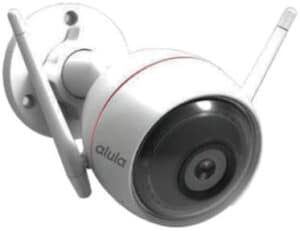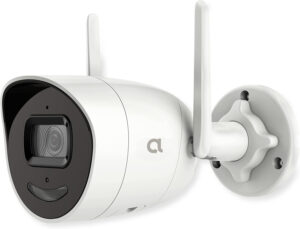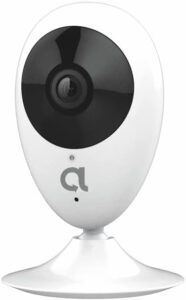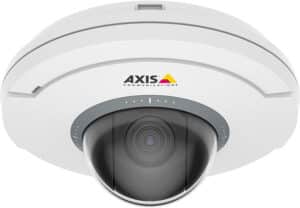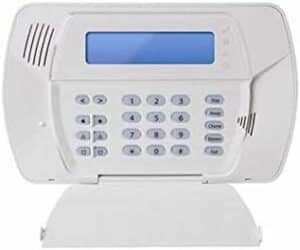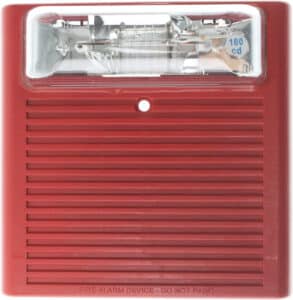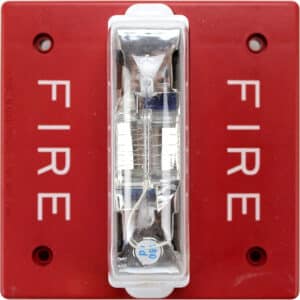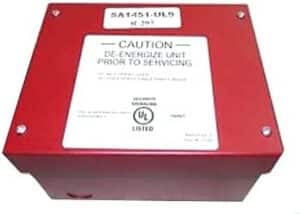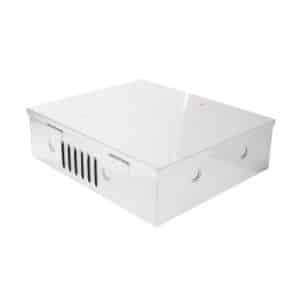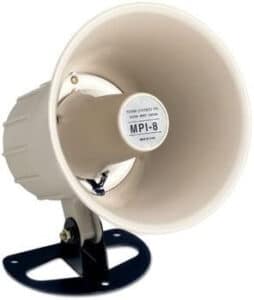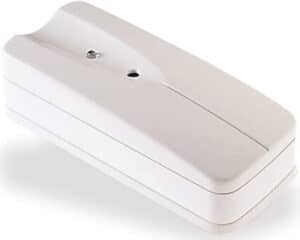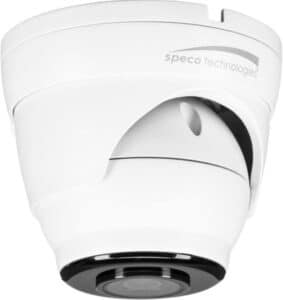Understanding the Importance of Access Control Systems for Schools To Maximize Children’s Safety
As parents, we all want to ensure that our children are safe and secure, even when they’re away from us. Schools have a huge responsibility when it comes to safeguarding our children, and it’s important that they have the right tools in place to do so. One such tool that has become increasingly crucial is access control systems for schools. These systems have the power to regulate who enters and exits the school, and they can even prevent potential security breaches.
In this blog, we’ll take a deep dive into the importance of access control systems for schools and how they can help maximize the safety of our children. So, buckle up and let’s explore this crucial topic together.
Table of Contents
A Comprehensive Guide to Access Control Systems: How They Work and Why They Are Important for Schools
As a parent or educator, the safety of children in schools is of utmost importance. With the ever-increasing threat of unauthorized personnel, it’s crucial to have a comprehensive security system in place. One of the most effective ways to ensure the safety of children at school is by implementing access control systems for schools.
Access control systems are designed to regulate and restrict entry to specific areas within a building or facility. By controlling doors and other entrances, these systems help maintain a secure environment and protect against unauthorized access. This is particularly important in schools, where ensuring the safety and well-being of students and staff is a top priority.
The main components of an access control system include access control equipment, such as card readers, keypads, or biometric scanners, as well as security doors for schools. These components work together to grant or deny access based on predetermined criteria, such as a person’s identity, credentials, or time of day. By implementing access control best practices, schools can significantly improve their security measures and create a safer learning environment for everyone.
Access Control Systems Installation and Requirements for Schools – What You Need to Know
Before installing an access control system, it’s essential to understand the requirements and considerations for schools. First and foremost, it’s necessary to assess the school’s current security measures and identify any areas that may be lacking or in need of improvement. This may involve evaluating the campus’s layout, identifying potential vulnerabilities, and reviewing existing security policies and procedures.
Next, it’s crucial to research and select the appropriate access control system for the school. This may involve consulting with access control systems Nashville experts, comparing security entrance systems, and determining the specific needs and goals of the school. It’s also important to ensure that the chosen system is in compliance with local and federal regulations, as well as any applicable industry standards.
Finally, it’s essential to develop a plan for the installation and integration of the access control system. This may include coordinating with contractors or vendors, scheduling the installation, and training staff on the new system’s use and maintenance.
The Importance of Access Control Systems in Keeping Schools Safe from Unauthorized Personnel
The primary purpose of access control systems for schools is to prevent unauthorized personnel from accessing the premises. This is achieved by controlling doors and other entrances, as well as monitoring and tracking the movement of individuals within the facility.
Access control systems are particularly effective in preventing unauthorized access because they require an individual to present valid credentials, such as a key card or fingerprint, before granting entry. This means that even if an unauthorized person were to gain access to a key or code, they would still be unable to enter the facility without the proper credentials.
In addition to preventing unauthorized access, access control systems also provide a variety of other security benefits for schools. For example, these systems can be used to monitor and record the movement of individuals within the facility, allowing for the identification of potential security threats and ensuring that all occupants are accounted for in the event of an emergency. Moreover, access control systems can be integrated with other security features, such as video surveillance and alarm systems, to provide a comprehensive security solution for the school.
Understanding the Different Types of Access Control Systems for Schools and How They Operate
There are several types of access control systems available for schools, each with its own unique set of features and capabilities. Some common types of access control systems include:
- Stand-alone systems: These are self-contained, single-door systems that do not require a network connection. Stand-alone systems are typically less expensive and easier to install than networked systems, making them a popular choice for smaller schools or facilities with limited budgets.
- Networked systems: These systems connect multiple access points to a central control system, allowing for centralized management and monitoring. Networked systems offer greater flexibility and scalability than stand-alone systems and are ideal for larger schools or facilities with multiple buildings.
- Cloud-based systems: These systems use cloud technology to store and manage access control data, allowing for remote management and monitoring from any internet-connected device. Cloud-based systems offer the benefits of networked systems without the need for extensive on-site hardware and can be more cost-effective in the long run.
Regardless of the type of access control system chosen, it’s essential to ensure that the system is compatible with the school’s existing infrastructure and can be easily integrated with other security features, such as video surveillance or alarm systems.
The Advantages of Using Modern and Integrated Access Control Systems for Schools
Modern and integrated access control systems offer a variety of advantages for schools, including:
- Enhanced security: By controlling doors and other entrances, modern access control systems provide a higher level of security than traditional locks and keys. This helps to prevent unauthorized access and ensures the safety of students and staff.
- Ease of use: Modern access control systems are designed to be user-friendly, with intuitive interfaces and easy-to-use software. This makes it simple for staff to manage and monitor the system, ensuring that the school remains secure at all times.
- Scalability: Integrated access control systems can be easily expanded or upgraded as the school grows or its security needs change. This allows for a more cost-effective and flexible security solution.
- Integration with other security features: By integrating access control systems with other security features, such as video surveillance or alarm systems, schools can create a comprehensive security solution that provides maximum protection.
- Remote management and monitoring: Many modern access control systems offer remote management and monitoring capabilities, allowing school administrators to manage the system from anywhere with an internet connection. This can be particularly useful for schools with multiple campuses or facilities.
Guide to Access Control Policies and Procedures for Improving School Safety
Implementing access control systems is only one part of creating a safer school environment. It’s also essential to develop and implement access control policies and procedures that outline how the system should be used and maintained.
Some key elements of access control policies and procedures for schools may include:
- Defining access levels: Determine which individuals should have access to specific areas within the school, and establish the appropriate access levels for each group.
- Credential management: Establish procedures for the issuance, revocation, and replacement of access credentials, such as key cards or biometric data.
- Visitor management: Develop a policy for managing visitor access, including the process for checking in and out, issuing temporary access credentials, and escorting visitors through the facility.
- System maintenance and updates: Create a schedule for routine system maintenance and updates, as well as procedures for addressing any issues that may arise.
- Emergency procedures: Develop procedures for using the access control system in emergency situations, such as lockdowns or evacuations.
- Training and education: Ensure that all staff members are trained on the proper use and maintenance of the access control system, as well as the school’s access control policies and procedures.
Principles of Access Control System Architecture for Schools
When designing an access control system for a school, it’s essential to consider the following principles:
- Layered security: Implement multiple layers of security to create a more robust and effective security solution. This may include the use of physical barriers, access control systems, video surveillance, and intrusion detection systems.
- Least privilege: Grant individuals access to only the areas and resources necessary for their job function or role within the school. This helps to minimize the risk of unauthorized access and ensures that sensitive areas remain secure.
- Separation of duties: Ensure that no single individual has complete control over the access control system. Divide responsibilities among multiple staff members to minimize the risk of insider threats and maintain a secure environment.
- Audit and accountability: Regularly review and audit the access control system to ensure that it is functioning effectively and that all users are adhering to the school’s access control policies and procedures.
- System redundancy: Implement redundant systems and backup measures to ensure that the access control system remains operational in the event of a failure or disaster.
Access Control Systems and Integration with Other Security Features in Schools
A comprehensive security solution for schools should include the integration of access control systems with other security features, such as video surveillance, intrusion detection systems, and alarm systems. This integration provides several benefits, including:
- Increased security: By combining multiple security measures, schools can create a more robust and effective security solution that addresses a variety of potential threats.
- Centralized management: Integrating multiple security features allows for centralized management and monitoring, making it easier for school administrators to maintain and oversee the school’s security measures.
- Cost savings: By integrating multiple security features into a single system, schools can often save on equipment and installation costs, as well as ongoing maintenance and monitoring fees.
- Improved response times: When access control systems are integrated with other security features, it can be easier for school administrators and first responders to identify and respond to security incidents more quickly and effectively.
The Role of Schools in Ensuring Safe Visitor Access with Access Control Systems
Schools must balance the need for a welcoming and inclusive environment with the necessity of maintaining a secure and safe campus. Access control systems can play a crucial role in ensuring safe visitor access by:
- Requiring visitors to check-in: Implementing a visitor management system that requires all visitors to check-in upon arrival helps to maintain a record of who is on campus and can deter potential intruders.
- Issuing temporary access credentials: Providing visitors with temporary access credentials that grant access to specific areas within the school ensures that visitors can only access the areas necessary for their visit.
- Monitoring visitor access: By integrating access control systems with video surveillance, schools can monitor visitor access and ensure that they are adhering to the school’s access policies and procedures.
- Establishing escort procedures: Requiring visitors to be escorted by a staff member while on campus can further enhance security and ensure that visitors do not access unauthorized areas.
Best Practices for Access Control System Management and Maintenance in Schools
To ensure the ongoing effectiveness and reliability of access control systems, it’s essential to follow best practices for system management and maintenance, including:
- Regular system audits: Conduct regular audits of the access control system to ensure that it is functioning effectively and that all users are adhering to the school’s access control policies and procedures.
- Routine maintenance: Schedule routine maintenance and updates for the access control system to ensure that it remains in optimal working condition.
- Credential management: Regularly review and update user access levels and credentials to ensure that only authorized individuals have access to specific areas within the school.
- Training and education: Ensure that all staff members are trained on the proper use and maintenance of the access control system, as well as the school’s access control policies and procedures.
- Emergency preparedness: Develop and regularly review emergency procedures for using the access control system in emergency situations, such as lockdowns or evacuations.
How Access Control Systems in Schools Assist in Emergency Preparedness
In the event of an emergency, such as a lockdown or evacuation, access control systems can play a crucial role in ensuring the safety and security of students and staff. Some ways that access control systems can assist in emergency preparedness include:
- Lockdown capabilities: Access control systems can be used to quickly secure all doors and entrances in the event of a lockdown, helping to prevent unauthorized access and protect students and staff.
- Access control during evacuations: In the event of an evacuation, access control systems can be used to control the flow of people and ensure that all occupants exit the building in a safe and orderly manner.
- Real-time monitoring: By integrating access control systems with video surveillance, schools can monitor the situation in real-time and provide critical information to first responders.
- Accounting for all occupants: Access control systems can be used to track the movement of individuals within the facility, allowing for the identification of potential security threats and ensuring that all occupants are accounted for in the event of an emergency.
Legal Considerations for Access Control System Implementation in Schools
When implementing access control systems in schools, it’s essential to consider any legal requirements or regulations that may apply. Some key considerations may include:
- Compliance with local and federal regulations: Ensure that the chosen access control system complies with any applicable local and federal regulations, as well as industry standards.
- Privacy considerations: When implementing access control systems that involve video surveillance or biometric data, it’s essential to consider any privacy implications and ensure that the school is adhering to relevant privacy laws and regulations.
- Accessibility requirements: Ensure that the access control system is designed and installed in a manner that meets any applicable accessibility requirements, such as the Americans with Disabilities Act (ADA).
The Future of Access Control Systems and Potential Technological Advancements in Schools
As technology continues to evolve, the future of access control systems in schools is likely to see continued advancements and improvements. Some potential technological advancements may include:
- Artificial intelligence and machine learning: The integration of AI and machine learning technologies into access control systems could allow for more advanced monitoring and analysis of access data, helping to identify potential security threats more quickly and accurately.
- Biometric advancements: As biometric technology continues to advance, access control systems may see improvements in accuracy, speed, and reliability, making them even more effective in preventing unauthorized access.
- Integration with other technologies: The continued integration of access control systems with other security features, such as video surveillance, intrusion detection systems, and alarm systems, will likely lead to even more comprehensive and effective security solutions for schools.
Conclusion
We have learned that access control systems are a crucial component of school security. They help to minimize the risk of unauthorized access and ensure that only authorized personnel are allowed on school premises. By implementing an effective access control system, schools can provide a safer learning environment for children while also complying with safety regulations.
At Xcessory Zone, we understand how important it is to keep your home and family safe. That’s why we offer a range of DIY home security products that are affordable and easy to install. Our products, ranging from different access control systems, motion detection cameras to smart door locks, are designed to meet your unique needs and requirements while providing maximum security.
So, if you’re looking for effective and affordable home security solutions, visit Xcessory Zone today and protect what matters most. Remember, safety is not something to compromise on, and taking action to ensure the security of your loved ones is crucial. Don’t wait, take control of your home security now!
FAQs
What are the different types of access control systems that schools can implement to maximize children's safety?
Schools can implement various access control systems such as biometric identification systems, proximity card readers, keypad entry systems, and intercom systems to ensure that only authorized personnel can access the building, and monitor who is entering and exiting the premises.
What are the key benefits of implementing an access control system in schools?
Access control systems provide enhanced security measures by restricting unauthorized access, preventing potential intruders, and minimizing the risk of external threats. It also ensures the safety of students and staff by enabling smooth and quick evacuation during emergencies, and reduces the chances of theft and vandalism.
How can schools maximize the effectiveness of their access control systems?
Schools can maximize the effectiveness of their access control systems by regularly updating and monitoring the system, implementing employee training programs, establishing clear policies and procedures, conducting regular audits, and addressing any system or security issues promptly to ensure that the system is operating efficiently, effectively and remains a secure environment for learning.
Meet Our Partners!




